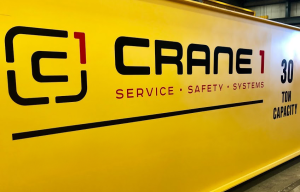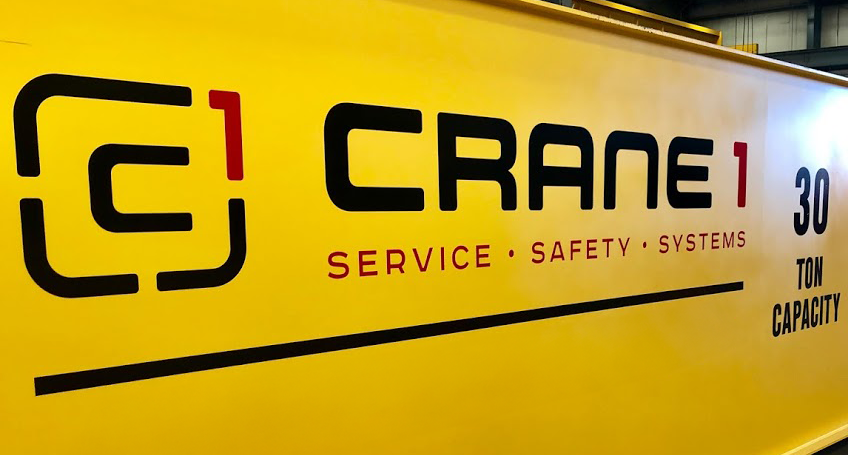The acquisition and installation of a new crane build represent a significant capital investment for any industrial operation. Ensuring optimal performance, safety, and longevity requires meticulous planning and consideration of numerous factors. Crane 1 Services, a leading provider of overhead crane solutions, understands the complexities involved in these projects.

This article delves into the five paramount factors that businesses must address when embarking on a new crane build, providing a comprehensive guide to informed decision-making.
#1. Application and Operational Requirements:
The foundation of any successful new crane build lies in a thorough understanding of the specific application and operational requirements. This involves a detailed analysis of the following aspects:
Load Capacity and Duty Cycle:
-
- Determining the maximum weight the crane will need to lift (rated capacity) is crucial. This must account for the heaviest anticipated load, including any lifting attachments.
- The duty cycle, which reflects the frequency and intensity of crane operation, dictates the selection of components and the overall design. A high-duty cycle crane requires robust materials and components capable of withstanding continuous operation.
- Duty Cycle=Total Time Operating Time
Span and Lift Height:
-
- The span, or the distance between the runway beams, must accommodate the workspace and the dimensions of the loads being handled.
- The lift height, or the vertical distance the hoist can travel, must be sufficient to lift and position loads at the required elevations.
Travel Speeds and Control Systems:
-
- The required travel speeds for the bridge, trolley, and hoist must align with the operational workflow.
- The selection of control systems, including pendant controls, radio controls, or automated systems, should consider operator ergonomics and operational efficiency.
Environmental Conditions:
-
- The operating environment, including temperature, humidity, and potential exposure to corrosive substances or hazardous materials, must be factored into material selection and protective coatings.
- For example, cranes operating in foundries or steel mills require high-temperature-resistant materials and specialized coatings.
Material Handling Characteristics:
-
- The size, shape, and fragility of the materials being moved will determine the hoist type, lifting attachments, and the precision of the crane’s movements.
#2. Structural Integrity and Design:
The structural integrity of the new crane build is paramount for ensuring safety and reliability. This involves meticulous design and engineering considerations:
Finite Element Analysis (FEA):
-
- FEA is essential for analyzing the stress and strain distribution within the crane structure under various load conditions. This ensures that the design meets safety standards and avoids structural failure.
- FEA helps optimize the design, reducing material usage and weight while maintaining structural integrity.
Bridge Girder Design:
-
- The bridge girder, the primary horizontal beam, must be designed to withstand the bending and torsional forces imposed by the load.
- Box girders, I-beams, and other girder designs are selected based on the span, load capacity, and duty cycle.
Runway System Design:
-
- The runway system, including the runway beams, columns, and support structures, must be designed to support the crane and the loads it carries.
- Proper alignment and leveling of the runway system are crucial for smooth crane travel and preventing premature wear.
Material Selection:
-
- The selection of materials, such as structural steel, must consider the strength, durability, and corrosion resistance required for the operating environment.
- High-strength steel alloys may be necessary for heavy-duty applications.
Welding and Fabrication:
-
- High-quality welding and fabrication techniques are essential for ensuring the structural integrity of the crane.
- Certified welders and rigorous quality control procedures are crucial.
#3. Electrical and Control Systems
The electrical and control systems of the new crane build play a vital role in its performance and safety:
Variable Frequency Drives (VFDs):
-
- VFDs provide precise control of motor speed and torque, enabling smooth acceleration and deceleration, and reducing mechanical stress.
- VFDs also offer energy efficiency benefits by reducing power consumption during partial load operation.
Programmable Logic Controllers (PLCs):
-
- PLCs provide automated control of crane functions, enabling complex lifting and positioning sequences.
- PLCs can be integrated with sensors and other devices for automated monitoring and diagnostics.
Safety Features:
-
- Safety features, such as overload protection, limit switches, and collision avoidance systems, are essential for preventing accidents and ensuring safe operation.
- Emergency stop systems and audible/visual alarms are also critical safety components.
Wireless Control Systems:
-
- Wireless control systems offer greater flexibility and operator mobility, enhancing productivity and safety.
- Secure communication protocols are essential for preventing unauthorized access and interference.
Regenerative Braking:
-
- Regenerative Braking systems capture the kinetic energy of the motor during deceleration, and return it to the power grid, increasing energy efficiency.
#4. Installation and Commissioning:
Proper installation and commissioning of a new crane build are crucial for ensuring the crane’s performance and safety:
Site Preparation:
-
- The installation site must be prepared according to the crane manufacturer’s specifications, including proper foundation and runway system installation.
Crane Assembly and Erection:
-
- Crane assembly and erection must be performed by qualified technicians, following the manufacturer’s instructions and safety procedures.
Electrical and Mechanical Connections:
-
- Electrical and mechanical connections must be made according to industry standards and safety codes.
Load Testing and Certification:
-
- Load testing is essential for verifying the crane’s load capacity and structural integrity.
- Third-party certification is often required to ensure compliance with safety standards.
Operator Training:
-
- Comprehensive operator training is essential for ensuring safe and efficient crane operation.
#5. Maintenance and Service
Regular maintenance and service for the new crane build are essential for extending the crane’s lifespan and ensuring its continued performance and safety:
Preventive Maintenance:
-
- Preventive maintenance, including regular inspections, lubrication, and component replacement, is crucial for preventing breakdowns and extending the crane’s lifespan.
Predictive Maintenance:
-
- Predictive maintenance, utilizing sensor data and analytics, can identify potential problems before they lead to failures.
Component Replacement and Repair:
-
- Prompt replacement or repair of worn or damaged components is essential for maintaining crane safety and reliability.
Regular Inspections:
-
- Regular inspections by certified personnel are vital to ensure compliance with safety regulations.
Documentation:
-
- Maintaining thorough documentation of inspections, maintenance, and repairs is important for tracking the crane’s history and ensuring compliance.
Building a new overhead crane system is a complex undertaking that requires careful consideration of numerous factors. By focusing on the five paramount factors outlined in this article – application and operational requirements, structural integrity and design, electrical and control systems, installation and commissioning, and maintenance and service – businesses can ensure a successful new crane build project that meets their operational needs and safety standards.
At Crane 1 Services, we are committed to providing new crane builds and comprehensive overhead crane solutions, from design and engineering to installation and maintenance, ensuring the optimal performance and longevity of your investment. Call (888) 316-2617 to receive a free quote from our team and learn how we can reduce your downtime costs!
